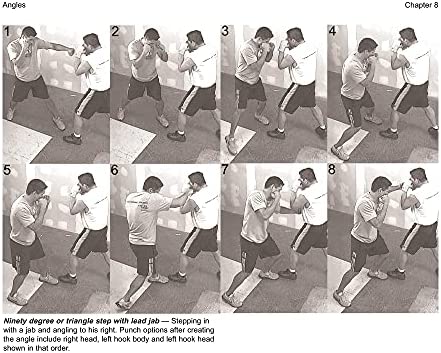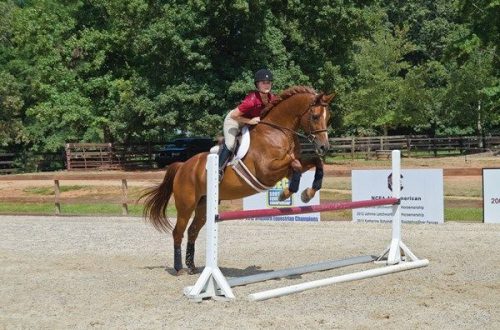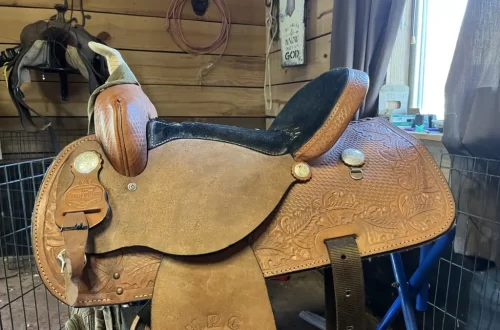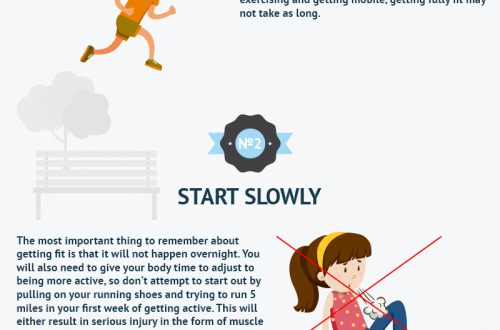
Training Fundamentals: 10 Commandments
Training Fundamentals: 10 Commandments
The principles of riding as a science can be seen as guidelines for the ethical standards of training that can make our sport sound and objective. The Ten Principles were developed by myself and Professor Paul McGreevy and then reviewed by a panel of 10 behavioral scientists. You can learn more about them on the International Equitation Society website: http://www.equitationscience.com. Ниже вы можете ознакомиться с нашими основными выводами.
So the principles are:
1. Training must be tailored to the basic needs of your horse, appropriate to its ethology and learning abilities.
This means that we need to consider how horses live in their natural environment.
Ethology is a field discipline in zoology that studies the genetically determined behavior (instincts) of animals, including horses. It helps explain the natural social structures of horses, including a complex dynamic social organization with social rank that determines the right to access resources (food, water). Horses show “two-way dominance”, which means that each of them has an individual relationship with another individual, however there is no evidence that they understand or care, for that matter, about the relationships between individuals in a social group. In other words, horses do not have a stable hierarchy as they have individual relationships with each other. This explains the complex relationship patterns seen in herds that do not fit with hierarchical explanations. Horses need the company of their own species and form bonds easily, so isolation is not good for them. Horses have evolved to move and graze for 16 hours a day, and their digestive systems and brains have adapted to this routine.
You have to consider how horses think. The cognitive function, “cognition,” describes how animals process information about the world around them. Compared to the human brain, the horse’s prefrontal cortex is smaller, so horses can’t remember events the way we do. In all mammals, including humans, memories last only about 3 seconds. In humans and other animals, such as pack predators (eg wolves and lions), there are specific neural tissues that renew memory pathways in the prefrontal cortex. The absence of this in horses means that they do not visualize stimuli that they cannot see. However, if a stimulus is associated with a specific response, it will elicit a specific behavior. This means that horses’ memories are not subject to distortion through imagination and visualization, but remain completely intact. Remembering and recognizing stimuli that evoke certain responses is what is responsible for security. We must be careful not to overestimate a horse’s intelligence (eg, “it knows what it did wrong”), especially when trying to justify punishment. In the same way, we should not underestimate their intelligence by assuming that horses do not have emotions and feelings. Our latest research shows that attachment, arousal, and emotion affect the effectiveness of various learning processes in a very individual and interesting way.
Are we ignoring? Overestimating or underestimating a horse’s intelligence has negative consequences for its well-being. Isolation, restriction of freedom of movement and feeding directly affect the physical and mental well-being of the horse.
2. Do self-education! You must know how to effectively train a horse, to put into practice the theory of learning.
The training of the horse must take into account the proper use of key training concepts. habituation, sensitization, operant conditioning, formation and classical conditioning.
The world is a rather intimidating place for a horse, but you can create a more comfortable environment for it by using a learning process that can be called “Addiction«.
Habituation is considered complete when the animal stops reacting negatively to events and stimuli when it recognizes them. Horses are innately afraid of the new/unfamiliar (neophobia) and often find the characteristics of various stimuli (size/size, novelty, proximity and sudden appearance, etc.) annoying to the senses. So, for example, eIf the object is moving, especially not stable or towards the horse, it may be difficult for him to identify it, even if he has already become familiar with it. Habituation can be used to deactivate responses to aversive stimuli in a process called desensitization. Systematic desensitization, undermining, and counterconditioning are some methods of desensitization.
loss of importance – the most effective method for accustoming a horse to clippers, sprays, injections, etc.
When a horse sees a man approaching with a toy car, it becomes hyperactive and tries to break free, pulling on the ropes in its attempts to escape. Solving the problem involves teaching the horse to step back and forth from light lead pressure. Then the person with the car approaches the horse and, as soon as the horse shows the lowest level of fear, stops so that the distance between it and the person remains unchanged. The horse is then asked to step back and forth with lead signals using pressure. Initially, the horse slows down a bit in his reactions to light pressure (ignores it), as his response mechanism to this signal is blocked by fear of the clipper. So the trainer increases the motivational pressure so that after a few repetitions the horse begins to respond to lighter cues. The horse’s fear reaction to the car decreases at this distance. The man with the clipper again approaches the horse and as soon as he shows the slightest reaction of fear, the process of training with the help of pressure is repeated. It continues until the reaction of the horse to the clipper decreases, and it can be touched by the clipper, and then proceed to clipping.
Sensitization is an increase in the intensity of an individual’s response. If a person or animal is confronted with a series of excitatory stimuli, sensitization works so that subsequently the individual will respond faster or more intensely to the same or a different stimulus that is presented shortly thereafter. So, if the horse has learned not to react to the leg and the whip, then it is possible to sensitize him to the leg action by retraining, which includes work on moving forward from one whip. For example, a horse can be trained to go from a halt to a walk, from a walk to a trot, and then from a halt to a trot with just a light double touch of the whip (light – that is, one that you yourself can withstand). The tapping rhythm should remain constant. As the level of arousal rises, the horse will become sensitized to the rider’s legs as well. The rider must take care not to get into a situation where he needs to clench his teeth and “squeeze” the horse with his feet.
Rely on the concept of operant conditioning, which assumes that your horse is doing what you want, but in a way that is not stressful or stressful for you or him.
If you do not follow this concept, you may experience undesirable consequences: the horse may return to one of the ways that help him cope with stress: hyper-reactivity, attempts to escape, aggression, or a return to apathy and “dullness”. All this can threaten the safety of people and horses.
Operant conditioning is training in which the horse is rewarded (for the required behavior) or faces consequences (if the required behavior is not performed). There are 4 known ways to work accordingly, and the first is extremely simple – the horse does what you want, and you reward him:
1. positive reinforcement: We give the horse something he is interested in to increase his desire to repeat the behavior we want. Primary items can be any items that are of natural value to the horse. An example of what is used in training is food and touch. To be used as training rewards, they must be given to the horse immediately following a correct answer. The secondary positive amplifiers must be connected to the primary amplifiers. They often take the form of auditory stimuli such as a clicker or a sequential voice cue (such as “Good boy”).
The next method causes – negative reinforcement – causes more controversy, but in essence it should be reduced only to relieving pressure:
2. negative reinforcement: we remove something from the horse that he does not like in order to increase his desire to repeat the behavior we need. Negative reinforcement can and should be very subtle. Pressure motivates horses, but releasing it is what trains them.
The use of pressure to transition between and within gaits begins with pressure being applied, followed by maintaining or increasing pressure, and then releasing it. Good trainers always strive to reduce the “loudness” of signals to the mildest forms of pressure. Negative reinforcement takes many forms and explains how horses self-reward themselves when they get rid of riders (goats, etc.) or get away from the reins (pulling it out of their hands).
Even more controversial is positive punishment, the last resort to be resorted to…
3. positive punishment: adding something bad to reduce the chance of a certain behavior occurring (an example would be hitting a horse for batting). Positive punishment has a negative effect on the welfare of the horse and should therefore be avoided. If it is used, then it should be carried out simultaneously with the undesired behavior. It doesn’t work when delayed.
4. negative punishment: Removing something the horse likes to reduce the likelihood of a particular behavior occurring. Negative punishment is rarely used (except promptly removing the focus of attention to suppress or prevent the behavior). Applied with a delay, it becomes ineffective.
Learning is the process of building blocks, or “shaping” – ngradual, step-by-step construction of behavior. Each step should be slightly different from the previous one so that the horse understands exactly how to offer the correct / desired answer.
Learning takes time.
Classical conditioning uses signals to trigger and detect behavior. They must be used with exquisite precision to coincide with the onset of the desired behavior. Thus, the horns, the signals given by the rider’s body, must be given in succession just before the reins and leg signals to elicit the same response.
Are we ignoring? The use of inconsistent pressure and/or the infliction of prolonged discomfort has serious consequences for the horse’s well-being. As a result, you can get shoots, aggression, apathy and learned helplessness.
3. We use signals that are obvious to understand.
Your training should assume that classical and operant conditioning signals are unique and easily distinguishable when:
1. Descending/ascending transitions.
2. Acceleration / deceleration (tempo) of the movement of the limbs of the horse.
3. Lengthening/shortening (length of stride) movement of the horse’s limbs.
4. Lateral steps (turns) of the front legs.
5. Side steps of the hind legs.
6. Flexion of the head / neck /, changes in the position of the head.
Training a horse is fraught with difficulties from the very beginning because we sit on the animal and can only use two reins, the seat, body and legs, to stimulate the horse. But all these remedies may not provide the desired response in difficult circumstances or when the horse simply does not want to respond. So we need to separate our controls into those that can elicit a robust response (operant conditioning) and those that can maintain it when all goes well (classically conditioned controls).
Operantally conditioned controls are the reins and legs, so we need to have clear and easily distinguishable cues for changing gait, pace, and stride length, and for lateral steps with front and hind legs. We then need different controls based on seat and torso (rider body position) influences. First of all, the acceleration signals must be significantly different from the braking signals, otherwise confusion will arise.
Are we ignoring? Blurred and ambivalent signals can lead to confusion, stress and responses that compromise the efficiency of movement and the safety of riders.
4. Training should be based on the horse’s responses to your signals.
Training should take into account the fact that in order to teach a horse any behavior modification, everything begins with strengthening the basic attempts to influence the formation of the desired behavior, and then gradually improving and leading to it.
The Equitation Science formation scale starts with Basic Experience. This is followed by work on the response or movement in order to get it immediately and using light signals. The next stage – Rhythm – is trained when the horse learns to independently maintain his gaits, pace and stride length. Then comes Straightness. Unlike the FEI Scale (German Training Scale) where straightness comes much later (after Impulse and Contact), the Equitation Science Scale puts it right after Rhythm because we now know that horses not only work with diagonal pairs of legs, but each the diagonal pair has different propulsive rhythm characteristics that distort the horse. Now we have legs with which we “agreed”. The next is the horse’s body: Contact. The contact is most elusive when forming, because bоMost of it develops over time with the right training. At this level, the development of impulsion to engagement, then conduction, and finally collection develops through transitions between and within the gaits respecting two beats (two forward steps at walk and trot and two leaps of canter or canter). Time is of the essence in developing conduction and collection, and while many top coaches don’t recognize the importance of this factor, most of them do the right thing. As the horse progresses from impulse to collection, the connection between the horse and the rider through the seat, legs and reins develops, so proper seating becomes an essential and inevitable component. The last level of formation involves training the horse in a variety of places (outside the arena) so that he can be a reliable partner in any place.
Are we ignoring? Poor skill formation can lead to confusion and responses that compromise the efficiency of the movements and the safety of the rider.
5. Keep it simple and don’t confuse the horse. Your signals must be separated in time from each other.
The horse has three basic gaits. Four beat walk, two beat trot and three beat canter. The optimal time to elicit a response from the horse is when the leg is in the suspension phase. When the foot is on the ground, it is limited mechanically. So when you want a certain leg to move in a certain way, you have a small “window” to ask for it.
To illustrate this point, think of the canter pirouette. You have three separate measures to ask for something for each specific leg.. The leading front leg in the suspension phase can be asked to turn, the outside hind leg to yield, and the outside front and inside hind pair can be asked to contract to reduce the pirouette. All this happens at different times…
Of course, riders don’t always hit on time and often ask the horse for action at the wrong time, but when it does, there’s misunderstanding. When you ask for something that the horse can’t do, it will gradually stop responding to your requests (this is usually the reason why they start using more severe snaffles or spurs).
Giving signals at the same time requiring different responses leads to the fact that they suppress each other, and the horses gradually become desensitized. If we use opposite signals at the same time (for example, to speed up and slow down), the desensitization effect is increased, and confusion and stress are likely to occur. In the training process, signals can be used with a smaller time difference. Signals are like words, and the best riders “speak” articulately.
Are we ignoring? Conflicting signals weaken control and can lead to confusion and responses that compromise the efficiency of movement and the safety of riders.
6. Separate signals: one signal – one answer!.
Each signal must trigger one response, but each response can be triggered by more than one signal.
First of all, the acceleration signals must be separated from the braking signals. This is very important as the rein is often used to round the horse, which can confuse the slowing effect. Single rein action is often used for neck flexion, which can be confused with a basic turn, and the rider’s legs are often used for acceleration reactions as well as flexion and turn. The best thing you can do for your horse is to carefully consider each of your signals and ask yourself the question: are the problems that you have right now the result of confusion?
Are we ignoring? Ambiguous rein and leg signals lead to confusion and reactions that reduce performance and rider safety.
7. A good coach is consistent: fform consistent habits
When training a horse for new responses, all the conditions must coincide, the signals must be constant, the places of their application and the strength – the same?
After each response has stabilized, the application sites of the controls can be gradually changed. The training of a certain reaction should have the same structure and duration from time to time.
Horses are special animals: you often see that they can show the same reaction in a certain place every time. For example, when working on volts, riders notice that the horse has an improvement in one part of the volt, which subsequently spreads to the rest. It makes sense to train the horse in the same way and in the same place, each time until stabilization. While it is important to change direction/rein often, it is also wise to stay on the same rein when learning something new until the horse understands the new task before changing direction. Changing conditions can make the learning process difficult for the horse.
Remember what a habit is. It is the biomechanical repetition of something until it becomes a fixed action, like in ballet or martial arts.
Transition timing (gait, pace, stride length, movement) is often overlooked by riders. If transition timing is learned and improved within a certain number of beats, then transitions become a habit. If you look at top riders like Charlotte Dujardin on the Valegro, you will see that her transitions are almost always two strikes of the front legs at the walk and trot and two steps of the canter. I watched it in slow motion on different videos, everything is stable. When I discussed this with the best coaches in the world, I realized that they usually do not know what it is, how and why they do it, but they have a subconscious desire for such a sequence. Consistency makes horses calm and safe because it gives them a sense of predictability and control.
Are we ignoring? Inappropriate training can lead to boring answers that degrade performance.
8. Customization: The ability to carry yourself.
You need to work on the duration of the response – the ability to carry yourself. LThe horse must learn to “keep going” by maintaining rhythm, straightness and frame so that the rider does not have to constantly give him signals, risking that he will get used to them and lose his sharpness of reaction to them.
The ability to carry oneself independently is interpreted in different ways. We believe that it can be defined as follows: the horse must independently maintain its reactions and movement. If you tell me that you have trained a bird to sit on your hand, I will believe you only when you untie its wings. The same is true in driving. We have to train the horse to “walk on its own” and the concept is 300 years old.
The horse must maintain his speed, straightness and frame, and you must be able to let go of two or three steps (überstreichen) without the horse making any changes.
If you forcibly round a horse, it shortens the neck, and the biggest problem with a shortened neck, besides the orthopedic and neurological consequences (compression of the spinal cord and spinal nerves), is occlusion of the esophagus, which can cause airway obstruction and respiratory restriction.
Are we ignoring? The consequences of not being able to “move on its own” range from sluggish to hyper-reactive responses that compromise the efficiency of the horse’s movement, its well-being and the safety of its riders.
9. Beware of the flight reaction!
Avoid and prevent flight reactions as they are fear-based, resistant to sedation and may occur spontaneously.
Flight is often accompanied by:
1) increased activity of catecholamine (for example, increased concentration of adrenaline);
2) increased hyperreactivity;
3) aggression (including redirected aggression);
4) conflict and substitution of behavior.
If stress continues, you may experience:
1. Increased activity of glucocorticoids (for example, increased concentration of cortisol).
2. Lack of memory and learning.
3. Compromise immunity.
4. Digestive disorders.
5. Ritualization of original conflict behavior.
6. Redirected aggression.
7. Long-term uncertainty (eg, wandering along the fence, increased neophobia, cowardice, etc.).
If these symptoms appear, trainers should review their training programs and think about how they can change them. Some horses are more prone to stress than others, but it is still important to make sure that the trainer, the horse’s living environment, and the horse’s training environment are not causing stress.
Are we ignoring? Acute stress manifests itself as problematic behavior (escape, aggression, apathy). Chronic stress has very serious consequences for the horse’s well-being, including learned helplessness, and can be fatal.
10. Good learning is relaxed learning.
During the training of the horse, it is necessary to provide a minimum level of excitement.
During training, the horse should be as relaxed as possible. Certain levels of arousal, muscle tone, and alertness are necessary for successful training, but when they are exceeded, both the training process and the horse’s well-being suffer.
The best practice is to achieve a level of arousal that is optimal for learning a particular response. Try not to exceed it when you reach it.
It also means no overwork! It makes sense to try to complete three correct repetitions in a row with a short break, then three more, and finally three more. I say three because before the first three correct repetitions in a row, there can be many incorrect repetitions.
It has been proven that training according to this method is extremely effective – there is no overperformance, no excessively high levels of arousal. Five or ten correct consecutive repetitions create only a slightly greater effect than three.
Are we ignoring? Strong arousal can lead to a deterioration in well-being, which can manifest as acute / chronic stress (escape, aggression, apathy).
So here it is, a simple 10-point checklist. Did your training program pass this test?
Andrew McLean (source); translation by Valeria Smirnova.





